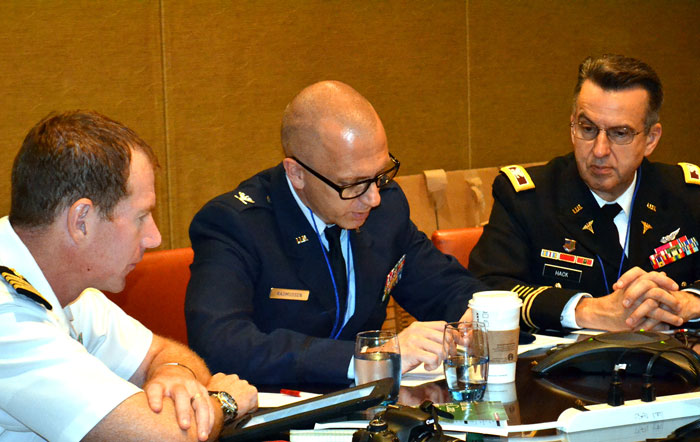Military, Civilian Medical Experts Emphasize Investment in Acute Trauma Care

From battlefield blasts to plane crashes, major advancements in acute trauma care are being seen in both the military and civilian health sectors, agreed experts during roundtable discussion at the 2013 Military Health System Research Symposium Aug. 13 in Fort Lauderdale, Fla.
Funding in research and rapid implementation of best practices are paying off, and people with serious injuries are surviving and rehabilitating, said director of the U.S. Army's Combat Casualty Care Research Program Col. Dallas Hack. Joining him was Air Force Col. Todd Rasmussen, CCCRP deputy director.
"It's not an overstatement to say that trauma care has been transformed because of this investment," said Rasmussen. "This transformation has resulted in the lowest fatally rate for service members we have ever seen, and this investment has translated to civilians, including those injured on the streets of this country."
Roundtable participants included Navy Capt. Eric Elster, Uniformed Services University School of Medicine, Department of Surgery professor; Air Force Col. Jeffrey Bailey, Joint Trauma System director; and Dr. Margaret Knudson, Chief of Surgery at the San Francisco General Hospital and Trauma Center.
Bailey, who joined the event via phone from Afghanistan, talked about some of the technologies, tools, and education implemented over the past decade of war, including battlefield tourniquets, hemostat bandages to reduce blood loss, and education on first-aid care. Bailey said now it's time to "focus on the gaps."
"The greatest burden of death is not in the hospital; it is on the battlefield. So we have the greatest opportunity to make a different in pre-hospital care," Bailey said, to the group.
It was a point with which non-military doctors agreed. Knudson joined the group to share her recent experiences caring for victims during the San Francisco plane crash in July. Fifty-three of the plane crash patients were treated at San Francisco General.
Knudson explained that she had previously trained with military health care combat casualty teams and how she used that training during the mass casualty triage.
"We need to keep these collaborations going because it brings a value to both the military and the civilian sectors," said Knudson.
Elster added, "It's how we train the next generation."














